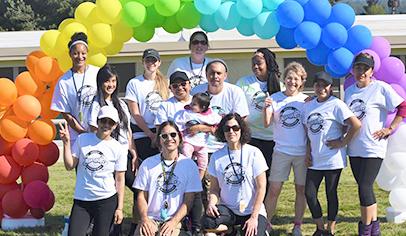Parent group leaders spend a lot of time thinking about how to increase parent participation in their groups, for good reason—research repeatedly shows a strong link between parent involvement and kids’ educational success, and without new parent volunteers, PTOs eventually fade away. But parent groups can also boost their involvement—and their overall success—by looking to increase student participation.
Regular student participation in a school’s PTO or PTA helps leaders understand the students’ experiences, identify issues that need attention, and find ways to address those issues. It also gives students a chance to develop leadership skills and be a force for positive change in their school community. Best of all, as more students become involved in the PTO, parent participation can increase. Learn how from the experiences of three different parent groups.
Student Input
Many schools support student membership in the school’s parent group or encourage participation through student board positions as ways to increase communication between students, parents, and teachers. But many parent groups also want direct input from students so that activities can reflect student interests better and parents can learn ways to involve students in the group’s work.
Daphne Feeney, who served as PTSA secretary at a Department of Defense elementary and middle school in Germany, started by checking in with the student council. “Our PTSA wanted to strengthen connections between our board members and the student body because we were getting secondhand information from parents about what activities the students were interested in,” Feeney says. “Rather than try to guess what the students wanted, we asked the student council president because she was more in touch with the interests of her peers.”
The student council president got feedback from classroom representatives and reported back to the PTSA. Parents learned that middle school students were’t interested in school dances—as the adults had been previously assumed—but elementary school students were. Because the middle schoolers needed volunteer hours for academic clubs or other organizations they were involved with, they agreed to organize and host a dance for elementary students. The PTSA created a leadership opportunity for the older students who, in turn, were able to run a fun event for younger schoolmates.
Leadership Opportunities
The Dora Moore ECE-8 School in Denver, Colo., is located in a busy downtown area where speeding and traffic accidents frequently occur. A 4th grade student council class representativegave a presentation to the PTSA about her concerns, and she asked for the group’s support in contacting the Denver Police Department for its help making the streets around the school safer.
The discussion revealed that traffic safety issues were a concern not only for students but also for the PTSA and school staff members. The PTSA copresident, who was also the staff contact for the student council, helped the student collect more than 400 petition signatures from PTSA members, students, teachers, staff, and the neighborhood’s homeowners. The school’s principal accompanied the student to the police department to deliver the petition and make the request in person. While law enforcement didn’t formally respond at that time, the attention and discussion about that student’s idea led the school district to add a crossing guard.
The PTSA also provided $500 in startup funds for the student council’s store, which sold school supplies and snacks before and after school and during athletic events. Student council members staffed the store and were responsible for serving customers, tracking inventory, and handling sales transactions. The proceeds were donated to Project Angel Heart, a Denver-based nonprofit that delivers nutritious meals to people with life-threatening illnesses.
Family Engagement
The Oakdale Christian Academy PTO wanted to build stronger relationships with the students and involve them in projects that foster leadership and creativity. The Chicago, Ill., group started by having the student council officers introduce themselves to the PTO, which led to collaboration on a variety of activities.
With help from the PTO, the student council planned and hosted the first-ever Oakdale school dance. Bolstered by their success and encouragement from parents, students have since become bolder and more creative in taking on leadership roles. In following years, the student council developed its own fundraising goals with guidance from the PTO, and it began operating a breakfast and snack cart to offer items to students in the before- and after-school programs. Students are in charge of managing inventory, tracking sales, and giving accounting updates to their teacher-mentors.
Following the PTO’s structure, the student council reorganized itself and established separate planning committees for proposed activities and holds regular monthly meetings for the executive board and the general council.
For the student council’s winter formal and spring carnival, in the 2016-17 school year, the PTO helped students prepare a budget, raise funds, plan activities, secure volunteers, and promote and operate the events.
The PTO also offers incentives and special recognition to classrooms that have the best parent attendance at PTO meetings. Risa Lanier of the Oakdale PTO sees a direct connection between student involvement and more parent participation. “Meetings now average 60 or more parents each month, where previously there were usually less than 10,” Lanier says. “We now have students encouraging their parents to attend meetings and get involved.”
Increased student leadership within the PTO is having a broader effect: “Because of the PTO’s support, teachers are inspired to provide more leadership roles for students and the students are seizing them. The PTO encourages these efforts in any way we can,” Lanier says. “The total effect has been a stronger relationship between the PTO and student body and a stronger school community.”
5 More Ways To Work With Students
-
Invite student council representatives to parent group meetings. If your school doesn’t have a student council, ask teachers to choose a representative from each grade to give a brief report at PTO meetings.
-
Look for ways that students can practice skills. A teacher might encourage students to attend a meeting and write an essay about it for class. Older students can research issues related to a possible playground upgrade and present the results to the parent group as part of a class project.
-
Ask for feedback on events. Have volunteers request informal feedback as kids or families leave, or invite students to fill out a quick survey.
-
Invite students to submit and/or vote on designs for a school logo or mascot. Use the design on a school T-shirt or yearbook cover.
-
Have students make cards or posters thanking businesses that sponsor your events. Then display them at school before delivering them to sponsors.

























